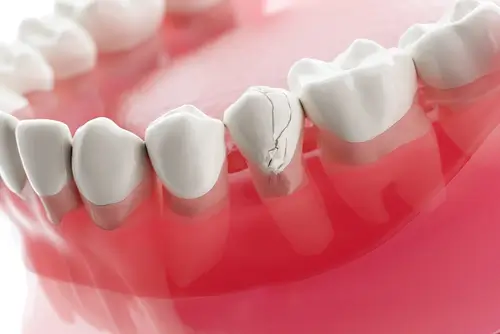Book Now
Dos And Don’ts After Wisdom Tooth Extraction
Millbrae, CA

Having your wisdom teeth removed is a common dental procedure that many individuals undergo at some point in their lives. Whether it’s due to impaction, overcrowding, or other dental issues, wisdom tooth extraction is often necessary to maintain oral health and prevent future complications. However, proper post-operative care is essential to ensure a smooth and speedy recovery process.
In this comprehensive guide, we’ll explore the dos and don’ts after wisdom tooth extraction to help you navigate the recovery period with ease. From managing pain and swelling to dietary considerations and oral hygiene practices, we’ll cover everything you need to know to promote healing and minimize discomfort after your wisdom tooth removal surgery.
Understanding Wisdom Tooth Extraction: What to Expect
Before we delve into the dos and don’ts of post-extraction care, let’s briefly discuss what happens during a wisdom tooth extraction procedure. Wisdom teeth, also known as third molars, typically emerge in late adolescence or early adulthood. However, due to limited space in the jaw, these teeth often become impacted or grow at an angle, leading to various dental issues such as crowding, infection, or damage to adjacent teeth.
During a wisdom tooth extraction, a dental surgeon or oral surgeon will numb the area with local anesthesia or administer sedation to ensure your comfort during the procedure. They will then carefully remove the wisdom tooth from its socket in the jawbone, sometimes requiring incisions in the gums and bone removal to access the tooth fully.
After the tooth is extracted, the surgical site is typically sutured closed, and gauze may be placed to control bleeding. The entire process usually takes about an hour, and most patients can return home shortly after the procedure.
Dos After Wisdom Tooth Extraction:
- Follow Post-Operative Instructions: Listen carefully to your dentist or oral surgeon’s post-operative instructions, including guidelines for managing pain, swelling, and bleeding, as well as when to resume normal activities.
- Manage Pain and Swelling: Apply ice packs to the outside of your face in 20-minute intervals to reduce swelling and alleviate discomfort. Take prescribed pain medication or over-the-counter pain relievers as directed by your dentist to manage post-operative pain.
- Keep the Surgical Site Clean: Gently rinse your mouth with warm saltwater or an antimicrobial mouthwash as recommended to keep the surgical site clean and prevent infection. Avoid vigorous rinsing or spitting during the first 24 hours to avoid dislodging blood clots.
- Eat Soft Foods: Stick to a soft or liquid diet for the first few days after surgery to avoid putting pressure on the surgical site. Opt for nutritious foods such as smoothies, yogurt, soup, mashed potatoes, and scrambled eggs to promote healing.
- Stay Hydrated: Drink plenty of water to stay hydrated and aid in the healing process. Avoid using straws, as the sucking motion can dislodge blood clots and increase the risk of dry socket.
- Rest and Relaxation: Take it easy and avoid strenuous activities for the first few days after surgery to allow your body to heal. Resting with your head elevated can help reduce swelling and discomfort.
- Practice Good Oral Hygiene: While avoiding the surgical site, continue to brush your teeth gently and floss carefully to maintain oral hygiene. Use a soft-bristled toothbrush and avoid vigorous brushing around the extraction site to prevent irritation.
- Attend Follow-Up Appointments: Schedule and attend any follow-up appointments with your dentist or oral surgeon to monitor your healing progress and address any concerns or complications.
Don’ts After Wisdom Tooth Extraction:
- Don’t Smoke or Use Tobacco Products: Avoid smoking or using tobacco products for at least 72 hours after surgery, as they can interfere with healing and increase the risk of complications such as infection or dry socket.
- Don’t Drink Alcohol: Refrain from consuming alcoholic beverages for at least 24 hours after surgery, as alcohol can increase bleeding and interfere with the healing process.
- Don’t Eat Hard, Crunchy, or Spicy Foods: Avoid hard, crunchy, or spicy foods that can irritate the surgical site or dislodge blood clots. Steer clear of popcorn, chips, nuts, seeds, and spicy sauces until your dentist gives you the green light to resume a normal diet.
- Don’t Engage in Strenuous Activities: Avoid vigorous exercise, heavy lifting, or strenuous activities for at least 48 hours after surgery to prevent bleeding, swelling, or complications.
- Don’t Touch the Surgical Site: Refrain from touching or poking the surgical site with your fingers, tongue, or any objects, as this can disrupt healing and increase the risk of infection.
- Don’t Rinse or Spit Vigorously: Avoid rinsing your mouth forcefully or spitting excessively during the first 24 hours after surgery, as this can dislodge blood clots and delay healing. Instead, gently dab the area with gauze if necessary.
- Don’t Neglect Pain Management: Don’t ignore post-operative pain or discomfort. Take prescribed pain medication or over-the-counter pain relievers as directed by your dentist to manage pain effectively and promote healing.
- Don’t Skip Follow-Up Care: Don’t skip follow-up appointments with your dentist or oral surgeon, even if you’re feeling better. These appointments are essential for monitoring your healing progress and addressing any complications that may arise.
Proper post-operative care is crucial for a smooth and speedy recovery after wisdom tooth extraction. By following the dos and don’ts outlined in this guide, you can minimize discomfort, reduce the risk of complications, and promote optimal healing of the surgical site.
Remember to listen to your dentist or oral surgeon’s instructions carefully, take prescribed medications as directed, and practice good oral hygiene to ensure a successful recovery. If you experience persistent pain, swelling, bleeding, or other concerning symptoms, don’t hesitate to contact your dental provider for further guidance and assistance.
With patience, rest, and proper care, you’ll be back to enjoying a healthy, pain-free smile in no time. Here’s to a speedy recovery and improved oral health!



